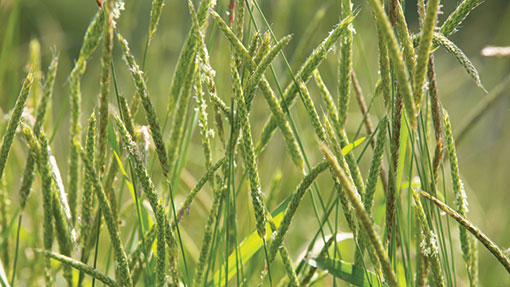Spring cropping and fallow could cut blackgrass

Spring cropping and fallow could provide the only option to tackle high blackgrass populations and keep wheat a profitable crop in years to come. Luke Casswell reports.
Blackgrass numbers have spiralled out of control in recent seasons and where cultural and agronomic practices can no longer halt the onslaught, alternatives to winter cropping will be needed.
Growers are being urged to monitor blackgrass numbers and where populations exceed 10 plants/sq m this autumn, growers should consider taking the field out of winter crop production.
See also: Conventional cultivations set for resurgence
Trials data from Syngenta has shown yields could be hit by up to 63% where high plant populations have come through the autumn and reached 500 heads/sq m.
This is not the only worry, according to Sarah Cook of Adas, who says the seed return from such high numbers will leave a legacy difficult to control.
The blackgrass numbers game
- Wheat growers could suffer yield losses of 63% where blackgrass populations reach 500 heads/sq m.
- 100 blackgrass heads/sq m can cause 13% yield loss
- 500 blackgrass heads/sq m leaves 54,000 seeds/sq m
- Seed longevity is one to five years
- Germination depth is 5cm
- 88% reduction can be achieved by one year of spring cropping
Data taken from trial work carried out by Syngenta and Adas.
“In high populations, growers really need to think about taking the field out of wheat for two to three years, introducing spring crops or fallow and dealing the problem head on.”
Trials have shown that including spring crops can see an 88% reduction in blackgrass numbers, while opting for fallow will see a 70-80% reduction each year.
Dr Cook adds that with wheat prices so low, growers who find themselves in high blackgrass scenarios will need to be achieving high yields just to break even, so counting blackgrass numbers in the autumn will pay off.
She predicts a yield of 12t/ha will could be required to account for a 63% yield loss in areas that have 500 heads/sq m, with wheat prices at £120/t and variable costs at £495/ha.
“Control is possible, but I think numbers have been so high this year, any control we did achieve was not making a huge difference.”
Reduce blackgrass populations
In areas where the troublesome weed is below 10 plants/sq m, delaying drilling will prove critical and growers are warned not to be tempted into going too soon following an early harvest.
Dormancy in blackgrass shed this summer is moderate following a warm period during maturity, according to Dr Cook.
“This means germination will be neither rapid nor slow and there should be ample opportunity for achieving a stale seed-bed.”
Growers are reminded that the autumn offers the best chance to get on top of the weed, with the majority of seedlings germinating through September and October.
Shallow cultivations should aim to keep the seed in the top 5cm of the soil profile, where it can germinate and be sprayed off prior to drilling. Alternatively, growers can opt to plough in order to bury the seed.
Spray programme
Ensuring the crop gets off to the best possible start will require establishing a fine-crumb texture with no clods prior to drilling, according to Sarah Mountford Smith of BASF.
Leaving the surface as flat as possible and with even trash distribution after drilling will enable the sprays to achieve good coverage of the weeds.
Pre-emergence herbicides should be based on a programme of flufenacet, pendimethalin and diflufenican, says Mrs Mountford Smith.
“They are three complementary modes of action and offer good control of blackgrass as well as other grassweeds and broad-leaved weeds.”
How to count blackgrass
Put your feet together at a right angle and if you can see 10 plants between your feet, that is roughly 100 heads/sq m.
Spraying within 48 hours of drilling will remain critical for getting good control and growers should delay until sufficient moisture is in the soils for optimisation of the residual herbicides.
In scenarios where seed-beds are dry, Avadex granules will offer a good alternative to tackle blackgrass, and should be followed up with Crystal and Hurricane when tramlines are visible to one leaf of the wheat, she explains.
Once the crop has emerged, further flushes of blackgrass can be controlled using a combination of residual and contact herbicides.
Stuart Jackson, cereal herbicide specialist at Dow AgroSciences, advises their pyroxsulam and flupyrsulfuron-based Unite, which offers control on a wide spectrum of the key grassweeds and broad-leaved weeds.
“To get optimum performance, we’ve found it is vital to apply post-emergence herbicides when there is active growth before and at least three days after treatment, so checking soil temperature is important.”
Know your resistance
In addition to knowing the scale of blackgrass populations, Dr Cook also advises growers to investigate the resistance status on their farm.
“Knowing what sort of resistance you have will help blackgrass control by giving you an idea of what actives to use on farm.”
Resistance has spread further north in recent years, with different populations showing different types of resistance.
Trials from 2013 showed that from a sample of 135 blackgrass seeds, 46% exhibited resistance to all three mechanisms, including enhanced metabolism, ACCase and ALS target site resistance.

